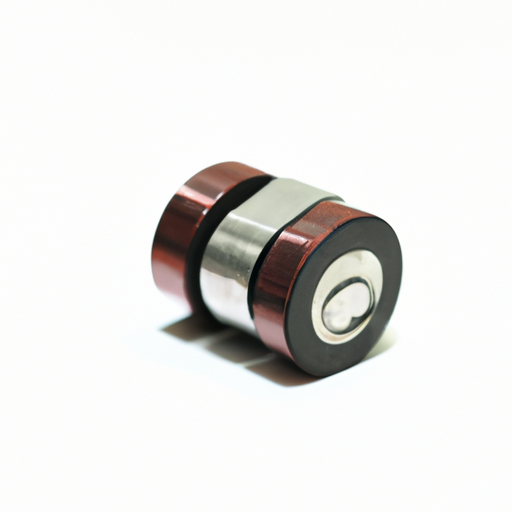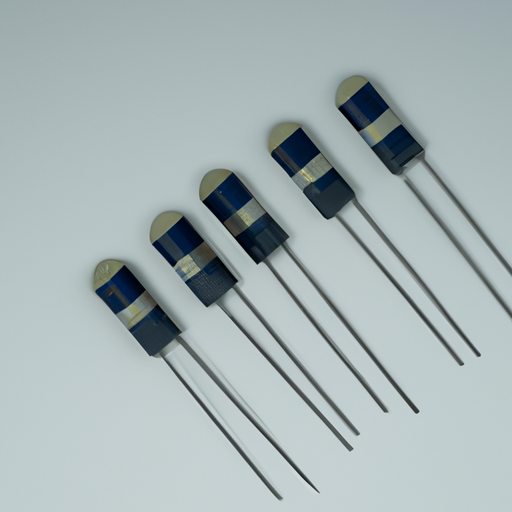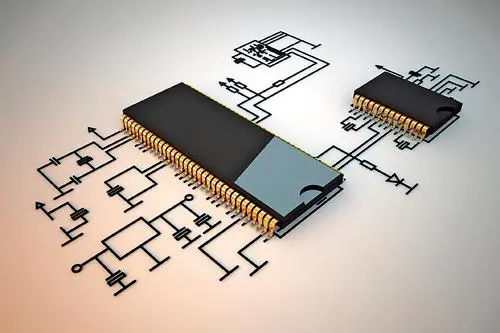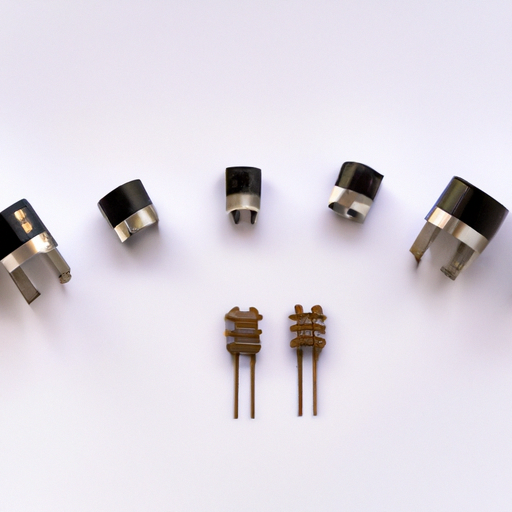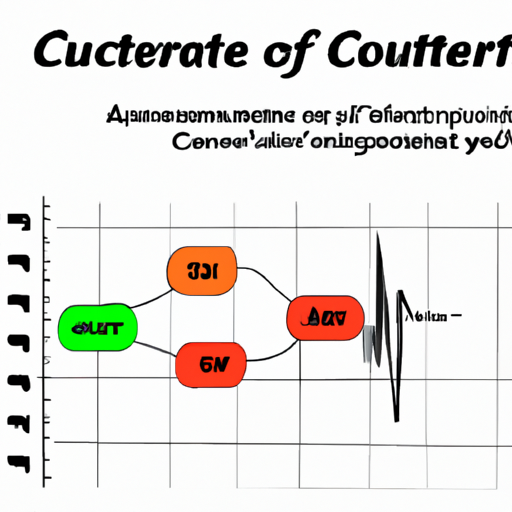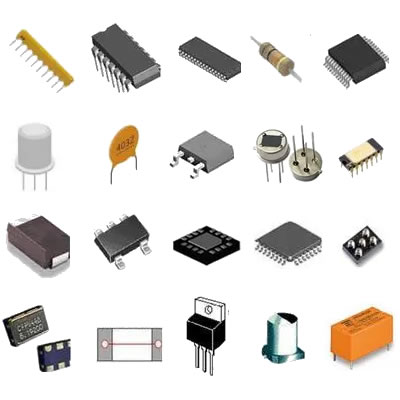What are the popular inductor magnetic core products?
What are the Popular Inductor Magnetic Core Products?
I. Introduction
Inductor magnetic cores are essential components in electrical engineering, playing a crucial role in the performance and efficiency of inductors. These cores are made from various materials that enhance the magnetic properties of inductors, allowing them to store energy in a magnetic field when electrical current flows through them. The choice of magnetic core material can significantly affect the inductor's performance, including its inductance, efficiency, and frequency response. This article aims to explore the different types of inductor magnetic cores, highlight popular products in the market, and discuss the factors influencing the selection of these cores.
II. Types of Inductor Magnetic Cores
A. Ferrite Cores
**Characteristics:**
Ferrite cores are made from ceramic compounds that exhibit magnetic properties. They are known for their high magnetic permeability and low electrical conductivity, which minimizes eddy current losses. Ferrite cores are typically used in high-frequency applications due to their ability to operate efficiently at elevated frequencies.
**Applications:**
Ferrite cores are commonly found in power supplies, transformers, and RF applications. They are ideal for applications requiring compact size and lightweight components.
B. Iron Powder Cores
**Characteristics:**
Iron powder cores are made from finely powdered iron particles that are compacted and insulated. They offer good magnetic properties and are particularly effective in low-frequency applications. The insulation between the particles helps reduce eddy current losses.
**Applications:**
These cores are often used in inductors for power electronics, such as switch-mode power supplies and DC-DC converters, where they provide good performance at lower frequencies.
C. Laminated Cores
**Characteristics:**
Laminated cores consist of thin sheets of magnetic material stacked together. This design minimizes eddy current losses by restricting the flow of currents within the core. Laminated cores are typically made from silicon steel.
**Applications:**
They are widely used in transformers and large inductors, especially in power distribution and industrial applications, where efficiency is critical.
D. Amorphous Cores
**Characteristics:**
Amorphous cores are made from non-crystalline materials, which provide excellent magnetic properties and low core losses. They are particularly effective in high-frequency applications due to their high saturation flux density.
**Applications:**
These cores are used in high-efficiency transformers and inductors, especially in renewable energy systems and electric vehicles.
E. Toroidal Cores
**Characteristics:**
Toroidal cores are ring-shaped and made from various materials, including ferrite and iron powder. Their shape allows for a more uniform magnetic field and reduced electromagnetic interference.
**Applications:**
Toroidal cores are commonly used in audio equipment, power supplies, and RF applications, where space is limited, and performance is paramount.
III. Popular Inductor Magnetic Core Products
A. Ferrite Core Products
**Common Brands and Models:**
1. **Fair-Rite Products Corp.** - ferrite cores like the ferrite core ferrite core 2643002022.
2. **EPCOS (TDK)** - B66306A ferrite cores.
**Key Features and Specifications:**
- High permeability for efficient energy storage.
- Available in various shapes and sizes to suit different applications.
B. Iron Powder Core Products
**Common Brands and Models:**
1. **Micrometals** - 1.0" diameter iron powder cores.
2. **Amidon** - T68-26 iron powder cores.
**Key Features and Specifications:**
- Good performance at low frequencies.
- Insulated particles to minimize eddy current losses.
C. Laminated Core Products
**Common Brands and Models:**
1. **Schneider Electric** - Laminated cores for transformers.
2. **Siemens** - Laminated steel cores for industrial applications.
**Key Features and Specifications:**
- High efficiency in power applications.
- Customizable sizes for specific needs.
D. Amorphous Core Products
**Common Brands and Models:**
1. **Hitachi Metals** - Amorphous cores for transformers.
2. **Magnetics** - Amorphous core products for high-frequency applications.
**Key Features and Specifications:**
- Low core losses and high efficiency.
- Suitable for high-frequency applications.
E. Toroidal Core Products
**Common Brands and Models:**
1. **Amidon** - Toroidal cores in various materials.
2. **Fair-Rite** - Toroidal ferrite cores.
**Key Features and Specifications:**
- Compact design with reduced electromagnetic interference.
- High efficiency in power applications.
IV. Factors Influencing the Choice of Magnetic Cores
A. Frequency Response
The frequency at which the inductor operates is a critical factor in selecting the core material. Ferrite cores are preferred for high-frequency applications, while iron powder cores are better suited for lower frequencies.
B. Saturation Flux Density
The saturation flux density of the core material determines how much magnetic field the core can handle before it becomes ineffective. Choosing a core with an appropriate saturation level is essential for maintaining performance under load.
C. Temperature Stability
Temperature variations can affect the performance of magnetic cores. Selecting materials that maintain their magnetic properties across a range of temperatures is crucial for reliability.
D. Cost Considerations
The cost of the core material can significantly impact the overall cost of the inductor. Manufacturers must balance performance requirements with budget constraints when selecting core materials.
E. Size and Form Factor
The physical size and shape of the core can influence the design of the inductor. Compact designs are often preferred in modern electronics, necessitating careful selection of core materials and shapes.
V. Applications of Inductor Magnetic Cores
A. Power Electronics
Inductor magnetic cores are widely used in power electronics, including switch-mode power supplies and DC-DC converters, where efficiency and performance are critical.
B. RF Applications
In radio frequency applications, inductors with ferrite and toroidal cores are essential for filtering and tuning circuits, ensuring optimal signal quality.
C. Audio Equipment
High-quality audio equipment often employs inductors with toroidal and ferrite cores to minimize distortion and improve sound quality.
D. Automotive Electronics
Inductor magnetic cores are used in various automotive applications, including power management systems and electric vehicle charging stations, where reliability and efficiency are paramount.
E. Renewable Energy Systems
With the rise of renewable energy technologies, such as solar inverters and wind turbines, the demand for efficient inductors with advanced magnetic cores has increased significantly.
VI. Future Trends in Inductor Magnetic Cores
A. Advancements in Material Science
Ongoing research in material science is leading to the development of new core materials that offer improved performance and efficiency, such as nanocrystalline and composite materials.
B. Miniaturization and Efficiency Improvements
As electronic devices become smaller and more efficient, the demand for compact and high-performance magnetic cores will continue to grow, driving innovation in core design and materials.
C. Environmental Considerations
Sustainability is becoming increasingly important in manufacturing processes. Future magnetic core products may focus on environmentally friendly materials and production methods.
D. Emerging Applications
The rise of new technologies, such as electric vehicles and smart grids, will create new opportunities for inductor magnetic cores, necessitating ongoing innovation and adaptation.
VII. Conclusion
In summary, inductor magnetic cores are vital components in various electronic applications, influencing performance, efficiency, and reliability. Understanding the different types of magnetic cores, popular products, and the factors influencing their selection is essential for engineers and designers. As technology continues to evolve, the future of inductor magnetic cores looks promising, with advancements in materials and design paving the way for more efficient and compact solutions.
VIII. References
- Academic Journals on Electrical Engineering and Material Science
- Industry Reports from leading manufacturers and market research firms
- Manufacturer Specifications from companies like Fair-Rite, Micrometals, and Amidon
- Online Resources and Articles from reputable electronics and engineering websites
This comprehensive overview of inductor magnetic core products provides valuable insights for anyone involved in electronics design and engineering, highlighting the importance of selecting the right core for optimal performance.

